
Login
X
- Home
- Courses
- Graduation
- Diploma Certificate
- Professional Diploma
- Special sessions / Aptitude boost up
- News & Events
- Student zone
- Placement
- Gallery
- FAQ
- Contact Us
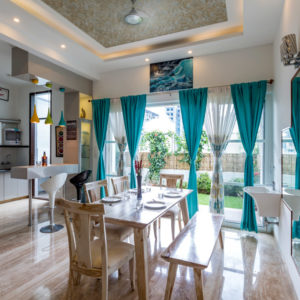

If beautiful rooms are on your mind, then you are most probably looking for the right person to do the job! And chances are, this person will either be a Designer or a decorator. But, in your head, do they both sound the same? Well, people do tend to mix up both, even though they are different. Read on to know the difference between Interior Design and Interior Decoration before you make your call.
In simple words, Interior design is the art and science of making a space useful and beautiful. Thus, a designer has to consider many things before fixing a design for a given space:
.. and more. So approach a designer ideally when you are about to begin with planning your home. That way, you save a lot of time and money! Also, the designer can use your feed-backs to create just the right space for you. Basically with a designer, you can be laid back when it comes to managing everything from start to finish. Moreover, you can also observe designers specializing in any one branch. Some examples are
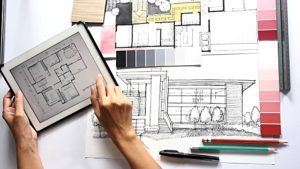
Now that you have an idea about designers, lets move on to interior decorators. So as the term suggests, this profession is more about decorating spaces according to client’s tastes and the decorator’s artistic skills. Here given below are a few of the things that a decorator does.
So basically, a decorator is essentially going to decorate the space. And he/she makes sure your space has that chic touch to it. Also, the decorator does not care about the building codes or standards unlike a designer. And when it comes to specializing, a decorator may be:

Do you think you have an artistic sense? Also, do people appreciate your design style? Or are you frequently consulted in matters of furniture and interior arrangements? Then you can become a decorator for sure!
The most basic difference among these two is- qualification. So, a designer often has a professional degree or a diploma. Thus, there are certain guidelines in each area of design for them to follow. But a decorator can explore interior decoration as a hobby. And with time and experience, he/she can create a portfolio of his/her jobs.
In many places, designers need license to practice. That is not applied to decorating.
The approach to work also varies. A designer thinks well ahead in future while designing for the present. But a decorator focuses on what’s new and trending for a space.
A designer works with many people most of the times- architects, contractors, carpenters-to make the design come true-for the space owner. However, the space is as functional as beautiful it appears to be.
A decorator, on the other hand, is more into the looks and feel of a space. Also, he/she mostly works with retailers or sellers of interior products. Here, the aim is to create a unique aesthetic space that shows high design value. Also, he/she knows what’s new and trending and goes with what appeals to the eyes and senses. So, their space may have a piece quite high on design value but not much in comfort- if that is what the design demands for the space!
To round it up, both designers and decorators have their fair amount of works, at times overlapping; most of the times, independent of each other. It all depends on what you want to do- give a refreshing makeover to a space or put up an aesthetic space that serves you in the long term.
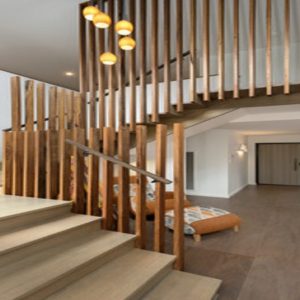
Who doesn’t love a comfortable and cozy home? But the real fun begins when the comfortable home looks all the more attractive. Of course, the design of a room depends on many factors,the most crucial being its size. This blog is about interior design ideas for that perfect finish to small rooms of your house.
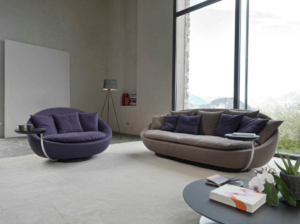
The answer to this question decides the final outlook of your room. For a clutter-free interior, minimalism is ideal. But if it is not your call, look for other options that limit the clutter in a small room. Also, you can experiment by mixing two different styles and yet keep things cool! For example, take the earth tones and rough textures from rustic style and add it to a modern setting as accent. So, the point to keep in mind here is that you don’t need too much stuffs on the floors. Why? Because you need to move around smoothly and look around unobstructed.
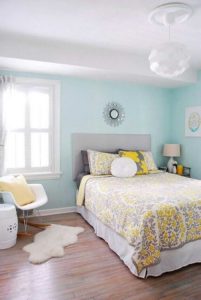
In simple words, light colors make an interior look larger and more spacious. Hey, that doesn’t mean you paint everything white! You can work with light tones of your favorite color. Also, light colors tend to save up on your lighting needs. So basically with colors like off-white and faint blush, its a win-win situation!
Not only will you hamper free air circulation with partitions, but you will also waste some space as well. So, use partitions ONLY if it is unavoidable. And if you feel a semi-private partition will be okay, opt for fabrics. Yes, fabrics offer interesting alternative for a solid opaque wall. Again, with light color, translucent material and light prints, you can add partition curtains that won’t make their presence felt.
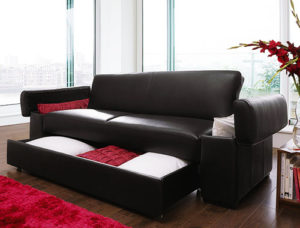
Instead of going for a platform bed, opt for a box bed with concealed storage drawers. Also, don’t scatter many single storage units. Substitute them with a vertical chest of drawers that takes up less floor area and can also settle in a corner of room.
Do away with anything and everything that darkens the space. And that includes dark shades or colours, heavy textures on furnishings and surfaces or something as basic as low lighting. Also, plan for maximum use of daylight in such a way that you require almost no artificial light during daytime. Adequate light brings a certain energy and the space tends to look bigger and more spacious.

… can make your room look big, not small! Mirrors reflect light and so it only makes sense to create spacious illusions using them. Also, if you plan cleverly then mirrors are a great way of enhancing or manipulating various light sources in your room. However, this one is slightly tricky among other interior design ideas in the sense that excess of mirrors may cause unwanted glares,reflection or other such issues.
Basically that means, opt for multipurpose furniture. There are a variety of options available in the market that work like magic for small spaces. Well, take for example, the sofa-cum-bed. For a small home with only a single bedroom, this piece of furniture is a big relief when guests drop in unannounced for the night!
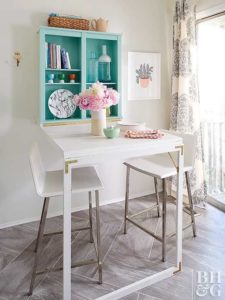
Modular cabinets or furniture are great if you have to keep changing your address every once in a while. And so, it is one of the best interior design ideas that you can add to a small room. How? Consider a foldable platform bed that conceals into a wall and reveals storage shelves on the other side during daytime. Also, fancy a tabletop concealed over the wall, to be revealed only when you have to chop your veggies or have that hot cup of soup!

Yes, you heard that right. Use your kitchen wall to fix accessories that can take care of your cutlery,pots and pans. Open storage shelves that extend vertically and similar accessories are great interior design ideas for small spaces. Also, extend this idea to your sweet little balcony and voila! Your vertical garden with pretty flower pots will add the touch of mother nature to your home.
Try to avoid big elaborate patterns or decorative motifs on your wallpapers. Also, you can go for plains/stripes instead of detailed florals when you select carpets, curtains or rugs. Again, keep the tones light. Plain, straight, clean lines in your interior will definitely magnify the visual perception of available space. So even with your sofas and bed linen, go for plain versions or if you just can’t skip florals, select minimally patterned textiles.
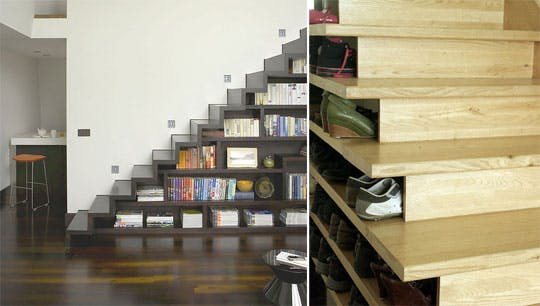
Use your stairs as built-in drawers for extra storage space. if the headroom height allows, you can actually set up a small library under a stair flight itself! Add some shelves to hold the books and make a cozy chair relax in one corner. Come to think of it, you can hide away in your books if you have such an adorable space in your home!
These interior design ideas are, what you may call, just the tip of the iceberg! With careful planning of your needs, budget and space, you can make the most of the little space you have in your home sweet home!
Design is enchanting and so are its different branches. Obviously, one area where design has grown into as a full-fledged career is that of Interior Design. And India is home to many Designers. Of course, among them there are certain designers that rule the design field with their works. So, some of the latest trends that you see are often their design ideas! That is why this article is about 7 such Top Interior designers who have made it big with their passion and work.

Sunita Kohli
A renowned interior designer,an autodidact and an architectural restorer, Ms. Sunita Kohli has made a huge impression in architecture and design. She has, to her credit, prestigious projects such as restoration of Rashtrapati Bhavan. In fact, her architectural restoration and deign works have added value to national elements. Also, the President of India conferred the coveted ‘Padma Shri’ in 1992 to her. And all of this in spite of the fact that she received no formal training in design or architecure! To know more about her, click here.

Lipika Sud
Ms. Sud is active in the design arena since the last two decades. Thus, she has really been a part of design evolution in India. She owns two design firms and an arts firm and takes keen interest in exploring creativity with each work. And one can easily see her unique inputs in her projects. Also, she has touched many segments such as residences, commercial spaces, hospitality sectors, apartments and so on. To know more about her, click here.

Shabnam Gupta
After graduating in Interior design, Ms.Gupta worked with many designers and architects on many projects. And finally in 2003, she put up her own design firm “The Orange Lane”. Sounds familiar? Well, don’t be surprised- she has designed the homes of renowned personalities and celebrities. Bollywood actors Irrfan Khan, Parineeti Chopra and Raveena Tandon feature in her clients’ list. Besides exquisite homes, she has worked her magic into the commercial and retail spaces as well. Want to know more about her? Click here.
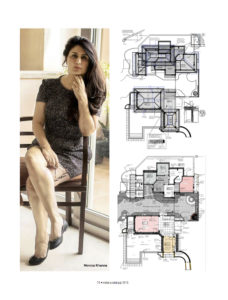
Shabnam Gupta
Ms.Khanna has to her credit, many residential,retail and hospitality projects that have won her many awards and recognition. And all her designs have one thing in common- being unique! Besides interior design, she also deals with architectural design and her immense work experience keeps her on her toes with creativity and innovation. And it comes as no surprise that she has won Best of Houzz Design for 2018. Visit her website to know more about her.

Tanya Gyani
From being handpicked by British Council in top 20 creative future in 2006 to winning the Elite Student Award of the FDA, Ms. Gyani has a great deal of global design experiences! Also,she to France, Italy, California and India. Her designs, floral arrangements and product designs-all stand out for their absolute design value. So, it comes as no surprise when you spot her among top Interior designers in India. To know more about Ms.Gyani, click here.

Aamir Sharma and Hameeda Sharma
This husband-wife duo have made waves with their designs and how! Top interior designers often identify with their works. So, minimalism rules the Sharmas’ design style as seen in many of their projects. And when it comes to Urban Chic themes, you can absolutely bet on them. Often in their works, you see some absolute grace in an upbeat room! But before you stereotype them with a particular style, again you come across a traditional interior with a modern touch or a minimal interior oozing elegance, in their portfolio. Well, give it a look yourself-click here.

Ambrish Arora
Architecture, Interior, Graphic, Furniture, Exhibition- Mr. Arora’s firm deals with all things design. He founded his design firm “Studiolotus” with Sidhharth Talwar and Ankur Choksi in 2002. Since then, there has been no holding back for him! Also, he believes in exchange of creativity to ensure its growth. So, if a project demands so, he goes to that extra length of collaborating with another design firm. If you want to know more about him, click here.
The top interior designers in India pay attention to client and their final designs reflect their own unique design philosophies as well. And if becoming one of the finest interior designer is on your mind, study the art and science of it from the best interior design college around you.

Does this question come in your way every time you think about Interior Design? Well, it is an important question for sure! After all, we also want money to keep our interests on track! And if you can’t wait to make a career out of your creativity, this question is definitely a decisive one. So, let us see where Interior Designer salaries stand in the current design Industry.

Like with any other industry, salaries in Interior design depend a lot on what exactly you do as a designer, where you work, nature of your work and so on. Let’s understand how it works.
Your job title, once you enter the design field, has a big role in your salary. You may begin as a draftsman in a firm and gradually may take the plunge to 3D visualizing. Or, you may join as a site supervisor for an ongoing project in a design firm. So, each designation has its own salary bracket.
Your earnings,if you happen to be a freelancer, fall in another category altogether. Well, lets talk about that later.
Almost in sync with your designation, the location of your firm decides your income. So if you are a draftsman working in a city like Calicut or Pune, expect your starting salary to be Rs.10,000/- to Rs.12,000/- per month. However, if you happen to work in metropolitan cities like Delhi or Mumbai, you can start with a monthly package of Rs.15,000/- to Rs.20,000/-. This is equally true for 3D Visualizing and other job titles as well.
Of course, it goes without saying that the more experienced you are, the better you earn. But another aspect to consider is the nature of your experience. So expect a good package if both the Employer design firm requirement and your portfolio works are about residential designing, as an example. However, you may have to compromise a bit if you specialize in commercial designs and apply to a residential design firm.
Your professional qualification is another point that influences your salary package. Of course, a Design degree fetches you more than a Design diploma. And one of the main reasons for this is the big difference in portfolios. Also,a degree program is almost always followed by internship or training, which gives you an edge in professional conduct.

A good firm is like good luck-tricky to find but worth it! So if you happen to land a job that gives performance based appraisals, then your quality of work can make it or break it! Also, there are firms that follow periodic appraisal policies, like an yearly increment. And of course, then there are firms that do not believe in appraisals at all… let us not keep our hopes high in those cases!
The ultimate dream of any and every interior designer is to own a design firm eventually and become an entrepreneur. But both have their own pros and cons, like two sides of a coin.
As a freelancer, you enjoy the absolute freedom-to choose a work, to decide how to go about it, how to design and so on. Obviously,you tend to work on your own terms and you enjoy all the profits. And as you gradually establish your own design firm, you see to it that the works you undertake are as per your signature design statement. You many stand to make as much as six-figure package monthly depending on the number of fruitful projects you do.

But, when you run a business, you have to foresee a lot of things. And most importantly you have to keep the works flowing in. You are responsible for anything and everything that happens in the firm. Also, as is with any business, there is no fixed income guarantee.
Now, when you are a salaried professional, you enjoy certain privileges such as leaves,salaries and increments. Also, there is a sense of Job security. However, the growth is comparatively slower as compared to being an independent interior designer.
Interior designer salaries (monthly) for design professionals begin from 10,000 INR to 25,000 INR and these only keep increasing with experience and time. So now that you know you stand to earn, don’t waste any more time- go and kick start your design career!

Visit Kerala to see how nature adorns and adores the state. So it is no surprise when one calls it ‘God’s Own Country’. Great landscape, scenic surroundings, lush environment-the state has it all for a healthy and serene living. Hence, it is common to see beautifully crafted houses across the state. Kerala style homes have a charm of their own. And of course, certain traditional features are highlights in such homes. Here we list down 10 such elements:
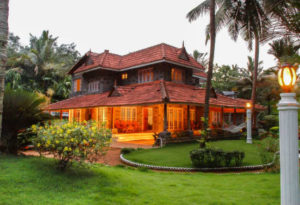
The layouts of Kerala houses are generally quite spacious. Well, the house caters to each member’s needs and Keralites pay special attention to future additions, such as a new bride or further expansions. So a typical 2 BHK House has a minimum average space of 1200 square feet; it is usually more than this size.
Since Kerala climate is tropical, humidity persists almost around the year. And that automatically calls for a good ventilation. So, rooms tend to have atleast two windows with the common size being 1.5m X 1.5m. Ofcourse, there are variations depending on the space and client demands.

Traditional kerala homes feature an inner courtyard (Nadumuttam) that is usually an enclosed rectangular space,placed right in the middle of the house. Also, a traditional Keral Hindu home often has an additional raised platform located centrally, that houses a Tulsi plant. However, these days, Inner courtyards are landscaped according to the owner’s design preferences.
No, we are not talking about windows or the bathroom ventilatory windows. If you look around, one can easily observe a slit like opening in the external walls of a room in a typical Kerala style home. This narrow opening is located centrally nearer to the ceiling. Again, the idea is to ensure effective ventilation even when the windows are closed for privacy reasons. Some clever design, eh?!

If you haven’t been to Kerala, chances are, you may not know what a Work area is. On the contrary, a Keralite cannot imagine his/her house without a work area. So basically, a work area is a small space near the kitchen where additional cleaning/ preparation zones are provided. And one can spot huge jackfruits, Pickle jars, Bananas etc stored in work area. Also, it has another use-it is a space to carry out messy kitchen works. For example, cleaning fish and meat. Well, the ancestors definitely knew the importance of hygiene!
Visit ancestral houses and palaces to understand the impact of wood in building mateials and construction in Kerala. An abundance of forests and easy availability of wood, plus the fact that it is a local material, makes it a popular choice for building structures. However, recent environmental calls to protect trees and timber have made the Malayalis eco-conscious and now they seek other options. Yet, they still prefer wood to make doors, windows, staircase and furniture.
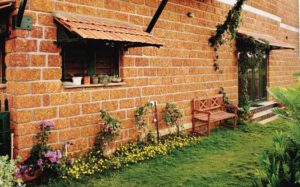
Laterite is the native building block that Keralites use instead of bricks, to construct a structure. It is rich in iron oxide and is a natural stone, which make sit easily available and accessible. In fact, if you observe Kerala style homes, the masonry blocks are laterites only. Also, its rough texture makes it appealing when used for exposed brickwork structures.
Again, tropical climate means heavy rainfall. Naturally, Kerala style homes commonly opt for a sloped roof ( Gable/ Hip/Dutch etc) over which sit the terracotta roof tiles. Why? Because they are easily available and are cost-effective. Also, they speed up water drainage and keep the interiors cool even in highly humid and hot weather.

As soon as you step into a Kerala style home, you may still find yourself technically standing outside on a corridor! Now, this space can generally provide seating for 2 to 3 people and is known as a sit-out. Well, Malayalees firmly believe that it takes a village to raise a child and they place great value on communal harmony and societal relations. Hence, this space doubles as a humble formal living area for the common people- most of their formal interactions are in this space.
The chaarupadi is a backrest that features in sit-outs. You can spot them on the seating platforms that line the sit-out, usually made of wood or steel.
Though it isn’t as trendy now as it was in the past two decades, it still has its own admirers. And that is because this simple flooring material is cheap and easy to maintain. All it requires is able labourers who do the work nicely in the first place. This floor is durable, climate friendly and keeps getting smoother and shinear with daily cleaning and mopping. It is one of the common highlights in traditional kerala style homes.
Want to know about different styles of interiors that are popular in Kerala homes? Then click here.
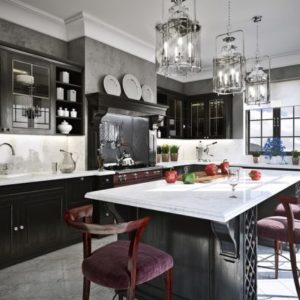
Colors add visual value to an interior space. So much that, many interior styles have their own defining shades of different hues. If a room has ever caught your fancy, its color definitely had a role in it. So this blog is all about the latest colors trending this year in design circles.
A beautiful design depends to a great extend, on the colors that it uses. This is true for Interior Design as well. Colors set the tone and the mood for an interior. And 2018 has seen subtle yet powerful splashes of colors in designer spaces. Here we list down a few of the more popular ones.

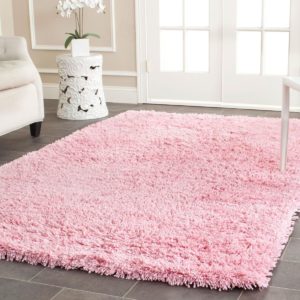
A quietly but steadily emerging trend in 2018 has been that of the soft peachy pink. Many people opt for this color for room backgrounds, such as walls. It adds elegance while keeping things simple. Mix and match with grays and you have it as your accent color. Add some deep red shades(sparingly) and this shade turns into a muted background.
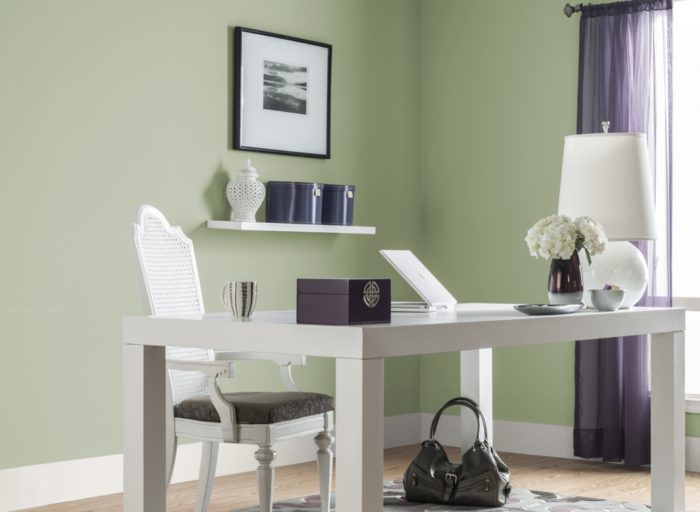
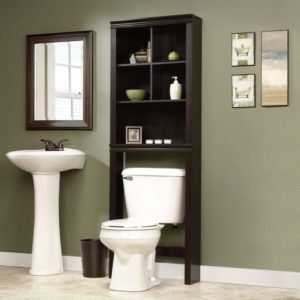
Also known as Sage, this shade is an amazing statement to an interior. It stays between the neutral grays and slightly brushes over Green. The silent tones make for a perfect palette! And another great thing about this color is its ability to contrast with white! Enchanting schemes in Sage have made it one of the latest colors tending in 2018.
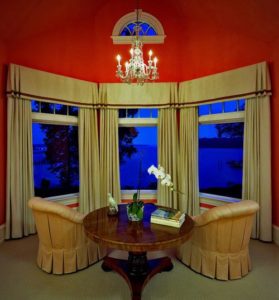
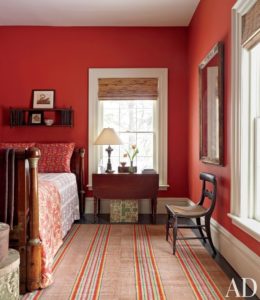
An unlikely color that has made its mark in 2018 design circles is passionate, deep red. Well,on its own, it remains one of the strongest shades. And that is why you have to be very clever when you decide on using it in your rooms. The right amount of crimson adds that accent to your space. However, if you are worried about the shade going overboard, restrict it to accessories. Also, to achieve the perfect balance, you can safely opt for neutrals along.
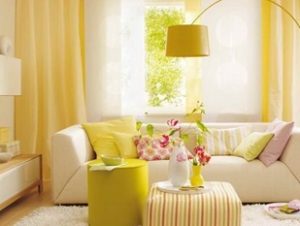
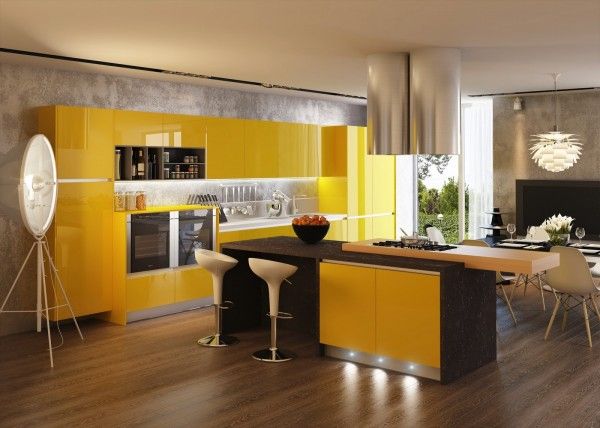
Yellow brings a certain energy into the space it adorns. Tired people may find the color refreshing, especially in rooms such as Kitchen or common room. And that makes it one of the latest colors trending this year. Still you have to be cautious while working with the color since too much yellow may have wearing-out effects. So try to apply it in patches. Also, you can mute down the tone in a way that it has a pleasant effect.
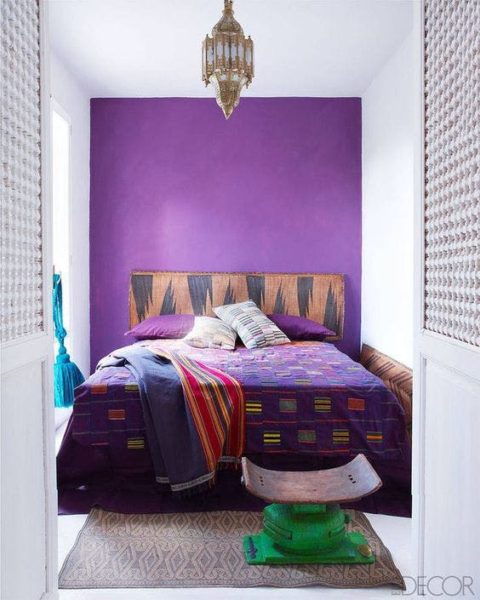
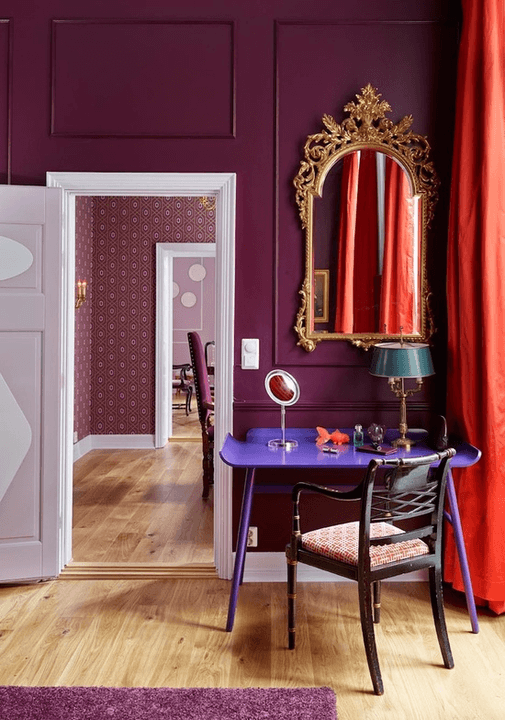
When Pantone announced Ultraviolet as its Color of the Year for 2018, everybody knew something dynamic was about to happen! The latest colors trending currently have Ultraviolet as a chart-topper. So, many Indian and international designers are experimenting with the color in terms of hue, tints and shades. Thus, ultraviolet interiors can be vibrant with gloss and textures or laid-back and relaxed with plain and matte finishes.
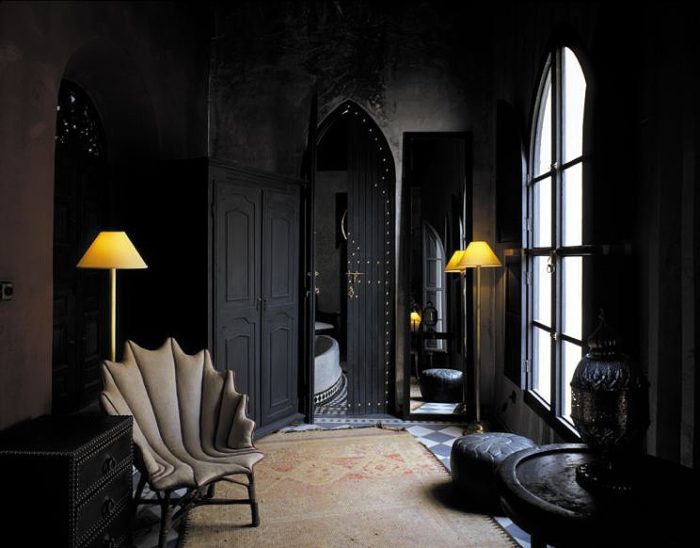
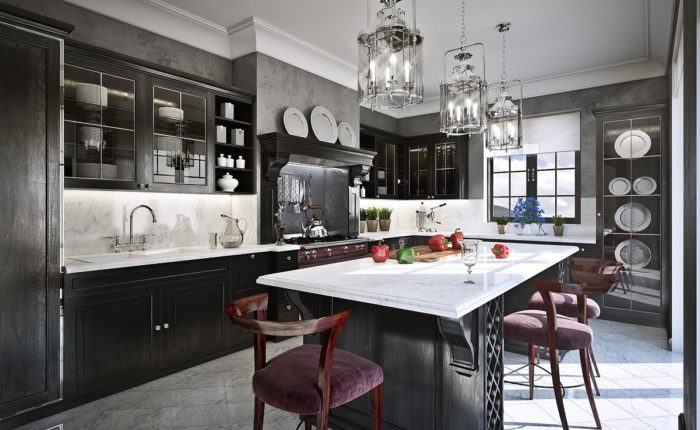
Black is the threshold of anything latest in colors. And that is why every year you hear about a certain color being the new Black. This year, black refuses to simply be absolute as charcoal- it aims at going down a tone or two. So that basically means there are interiors in shades of gray and black. The attractive point is that the monochromes not only complement each other, but very beautifully bring out the value of any other color around them.
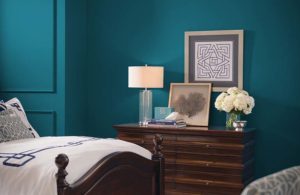
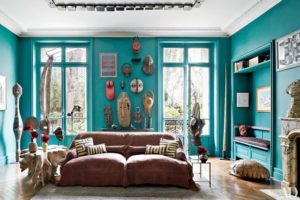
No, we are not talking about the teals or turquoises. Well, this shade is what you can call the best of both worlds.This color has proved to be a safe bet for those who fail to decide on one shade. It goes well with neutral schemes to give a calm and relaxing interior. And with zesty colors such as yellow, the hidden green in it beautifully complements the scheme. And the hidden blue softens the sharp contrast to eyes. No wonder it is a bestseller among the latest colors trending in interiors!
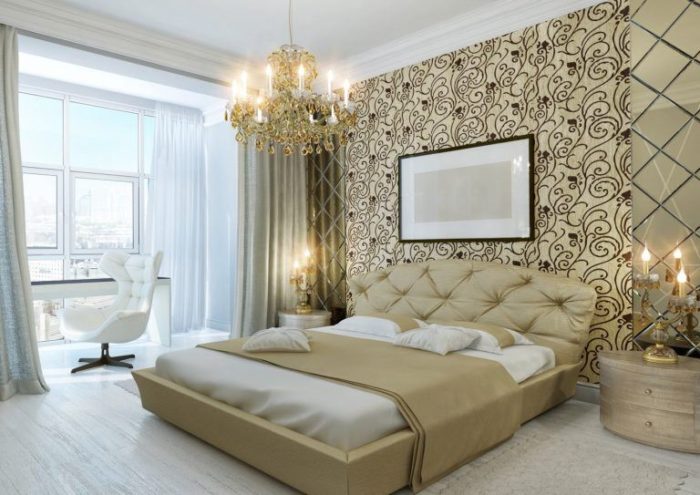
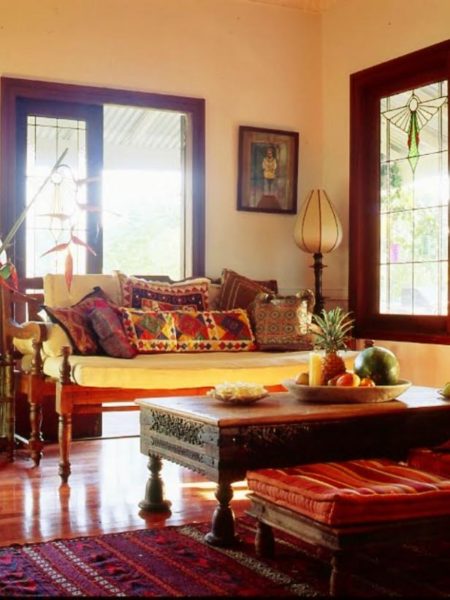
Apart from the colors mentioned above there are many others that have grabbed the designers’ attention globally. Metallic colors seem to be the new neutrals. And yet, the demand for rich earthy tones refuses to settle down. A cousin of Yellow, the Marigold (mustard) color, has its own fan following. Of course, not to forget, the calm minds that still relish turquoise and emerald interiors!
The application of colors extend to landscapes as well. With the right mix, you update your current dwelling into your perfect home!
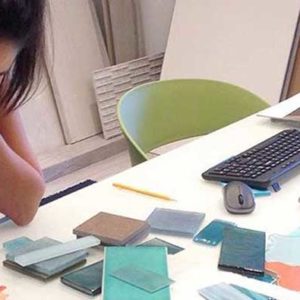
Who doesn’t like refreshing interiors? The beauty of an aesthetic interior is in the hands of its designer. One fine day, you may wake up to find designing as your dream career. So, once you decide that interior design is your call, don’t hold back! Begin your journey to learn and master this field. Also, realize the things you should know about becoming an interior designer.

A creative mind is one of the most important tools, to begin with. And every day you should exercise your creativity. The world of design is fast evolving. You have to be on your toes to keep pace with it. So the best way is to expose your creativity to new challenges.
Seek opportunities that push you to excel. Participate in design events, competitions, and forums. Also, spend time in creative exercises. And it helps when you make a habit of improving your creativity and design skills.
You may be really good at designing, but to make it work you need some extra skills. Yes, the way you select to present your designs is one of them. Here the trick is to know your client well enough to make the right choice of presentations. There are many ways to go about it.
And more than that, a lot depends on HOW you express. So, pay close attention to your words, body language and above all, your language skills. Why you say? Well, in interior design, clear communication means saving a lot of precious time and money. Well, you have to express your ideas to your client and to your workers in the exact same manner.
No, you don’t need to but that latest gadget on offering! Know about the latest technological advancements in related areas. Materials, software, design trends, construction methods… a lot of these evolve with time. And if you are an interior designer, you have to keep learning and un-learning all through your professional life.
Hard work will take you places, that’s a real deal in this field. So, this means a you will spend a lot of time practising , learning and exploring design stuffs. Yes, your academic training will give you many such instances but the point is to extend these habits to your practice also.
Stay true and honest to your work. It helps when you take responsibilty of the things you do.
Many interior designers opt to work part-time in academics as well. And that is mainly because it helps them to regularly revise their basics and learn advancements. Also, a lot of brainstorming is a part of education. That definitely is a big creative boost.
Never miss any learning/working chance that comes your way. A designer rarely uses the words ‘I can’t.’
When all is said and done, becoming an interior designer comes down to working SMART along with working hard. How can your masterpiece fetch you future works if you don’t market it wisely? And of what value is your work if it crosses the budget and time constraints? You should create or attend such platforms where you can increase your scopes of future projects.
Develop contacts. A word of reference may land you a valuable project. Your work quality and your client relation should be testimonies in themselves!
After working for some time as a freelancer or an employee, you will definitely want to open your own design firm one day. Again, though you want to be your own creative boss, however, don’t forget that ultimately you need income to survive!
You should develop business management skills if you want to be successful as an entrepreneur. Prioritize and divide time and resources with respect to the works that you get. Understand the market trends and your local business ethics. After all, you need to make both the client and your firm happy!
A great beginning to becoming an interior designer is when you enroll into a premium interior design college. Before you join a design school, do some background research and make sure it helps you in making your dream come true.

Interior Designing is the art and science of making a space aesthetically useful for its intended purpose. In simple words, it it makes your interiors beautiful and functional. And an Interior designer is the one who does this job. Take your living room, for example. The perfect interior will make sure you get compliments for its looks. And thanks to its thoughtful design, you will only be happy to entertain your guests in it.
Of course, since it is both an art and a science, you should make sure you know those bits before you start with it! Or better still, hire an interior designer who will do it for you. This designer will make sure what exactly you want your space to be and will make it happen.
Well, do you have it in you to be an interior designer? Great! Don’t search further, just read on. This blog will help you to know more about the career, salary, scope, qualifications and other details of interior design.
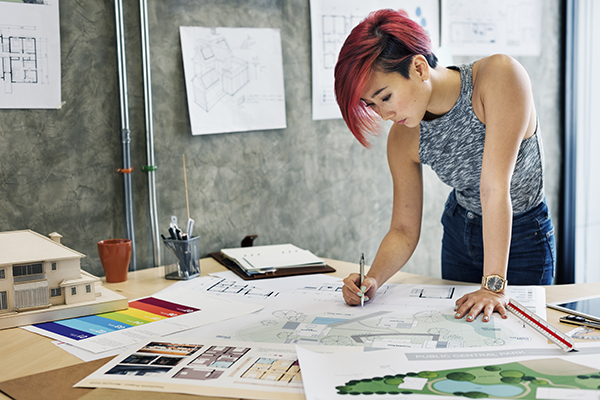
Interior designer has a very important role to play in today’s world. How we live greatly influences what we become. And so, our homes need to have that edge in them. Also, equally important are places like offices where we spend considerable active hours of our day. Or the malls/arcades that account for your weekend binges. Wait, don’t forget your vacation trips and those luxurious resorts. Who designs them? So here you get an idea about the career graph of an interior designer.
The need of the hour is to preserve nature when you design anything and everything. And if you get the correct training and exposure, you can be a successful and much-in demand interior designer.
Therefore, you can confidently pursue interior design. So the next question that strikes you is how to become an interior designer? At present, there are many courses and programs available to study interior design. Simply click on interior design course to know more.
Interior designer salary depends on many factors. To begin with, the type of work(residential/ commercial/ institutional/ hospitality etc.) is one. Another is the method you choose to calculate your fees. And then the size of the work, location, your role(freelance/ employed in a designated post), nature of work ( interior design/ space planning/ interior decorating/ furniture and furnishings only etc.) also contribute to the decision of your income.
Typically, as a fresher when you work in a design or architecture firm, your salary may be Rs 10,000/- to Rs 15,000/- per month. After two-three years, you can expect Rs 25,000/- to Rs 30,000/- per month depending on your post and firm. Almost all designers undertake extra freelance works which give them additional income and exposure. So in a nutshell, you stand to earn as much as you want to!
You may join as a 3D visualizer, AutoCAD drafts-person or a Site-supervisor. The type of interior design job you select is generally according to your interests. And when you improve with time, you can become a senior interior designer in a firm.
You can be an entrepreneur in any related area of your choice. There are many interior designers who open their own studios in fields like product design, furniture design, lighting, kitchen design etc.
It is a known fact that any person who has a knack for interiors and design can be successful in the field without any formal education. Yet, there are many,many advantages that the formal interior designer qualifications give you. And the basic one is an academic recognition. An interior design degree or diploma makes you eligible to apply for many posts in the design field. Furthermore, you can also go for higher studies in design branches. Also, you can learn the technical parts only if you study Interior design from a good college.
Interior design jobs are constantly on the rise. These days, the building and construction fields are fast expanding. So you can select from a wide variety of job offers. The many options are: work in a studio, supervise a site, focus on interiors only, become a space planner, become a color consultant, manage projects or undertake interior contracts on the whole.
You have a lot to choose from, when it comes to jobs in interior design.
The duty of interior designer depends on the post he/she holds in a company. So as a Draftsman, you create detailed working drawings like plan layout. And if you are a 3D Visualizer, then you work in software that creates realistic images for clients. The workers then replicate these images on site. Sounds exciting, right?!
The interior designer’s responsibility in the site is to supervise everything that goes on in there. And that includes the materials, labor issues, site conditions..everything.
Well, if you are a Project Manager, you are literally running the whole show! Weekly meetings, regular client updates.. you make a lot of teamwork happen! In short, you can be a
There are many Interior designing courses to choose from- right from a short term vocational course, to a one year diploma course and a three year graduate level course. Interior design can make you go beyond yourself. There is so much creativity and passion in it that you tend to celebrate your works. Each work is a new chance to make something new!
To make this happen, a lot depends on you! So, select a good place to study interior design. A place that gives you knowledge and pushes you to explore your design senses. To know more, visit vismayam college of art media

There are many ways in which you can study interior design. To begin with, you can search for materials on this topic. If you really want to learn for a professional touch, you can search for institutes, colleges, and online platforms. And when you list them down, you can clearly see two categories. One allows you to learn interior design online and the other group requires you to go to classes. Ofcourse, you may find it difficult to decide on it. So, this blog is all about the pros and cons of each type.
There are many universities that offer online programs on designing. It includes basic certificate courses to graduate level and beyond. Also, some colleges also offer specialties in design field. Let us see how the whole concept fits your scheme of things.
Pros:
Cons:
To study interior design, many people get admission into interior design institutes and colleges. So what exactly sets them going? Know about the advantages and disadvantages about learning in classes.
Pros:
Cons:
It is always better to know how, before you decide on where to study interior design. Do want to see how a standard design college looks like? Visit vismayam college of art and media
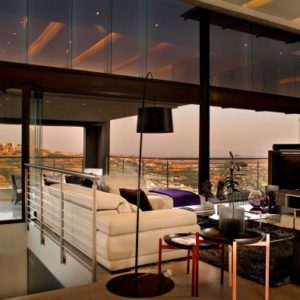
These days, your home is an extension of your design taste and preferences. And your designer takes great care when adding these details to your home. Of course, you can do that yourself! But your designer knows the trending interior design styles. And he/she combines that knowledge with your inputs to create that dream decor in your home.
It is always better to have a basic idea about different interiors out there. Well, think about it like this- when you buy a shirt, you browse through many. And you select one only when it suits best to your choices. Here, you need to know how to tell the difference between different shirts. The same goes with your interior.
So, this blog tells you about the common six different interior design styles that can help you to decide the best for you.
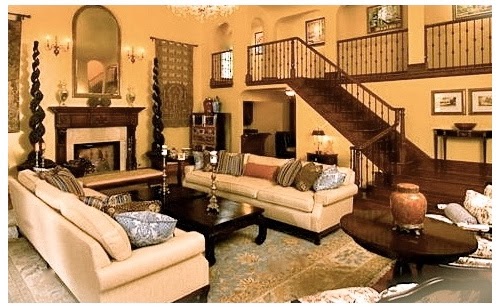
A traditional interior is made of different elements that reflect the cultural/traditional practices in a region. Many factors influence this style, such as local materials, art forms, climate patterns and age-old practices. In international design platforms, it refers to 18th & 19th century European Interiors. But in our country, all states have their own traditional interior design styles.
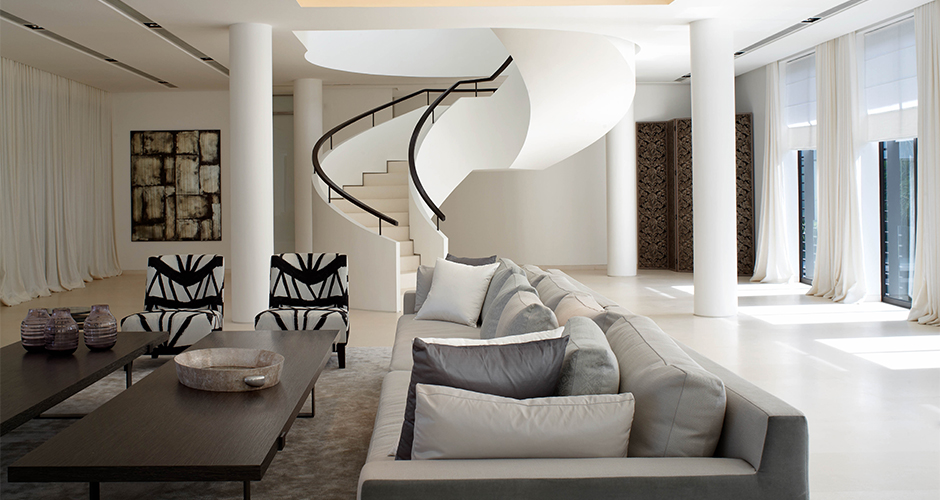
These interiors arrived when the early 19th century designers and architects were fed up of extravagant and wasteful designs. They developed a more simple and elegant style which the local people could also afford. This style moves away from traditional materials such as wood. It uses materials like glass, steel and leather. The color palette is quite soothing- white, black, grays and neutral tones. You can observe how everything follows an order, a smooth line, in a modern interior. The design principle is ‘Less is more’.
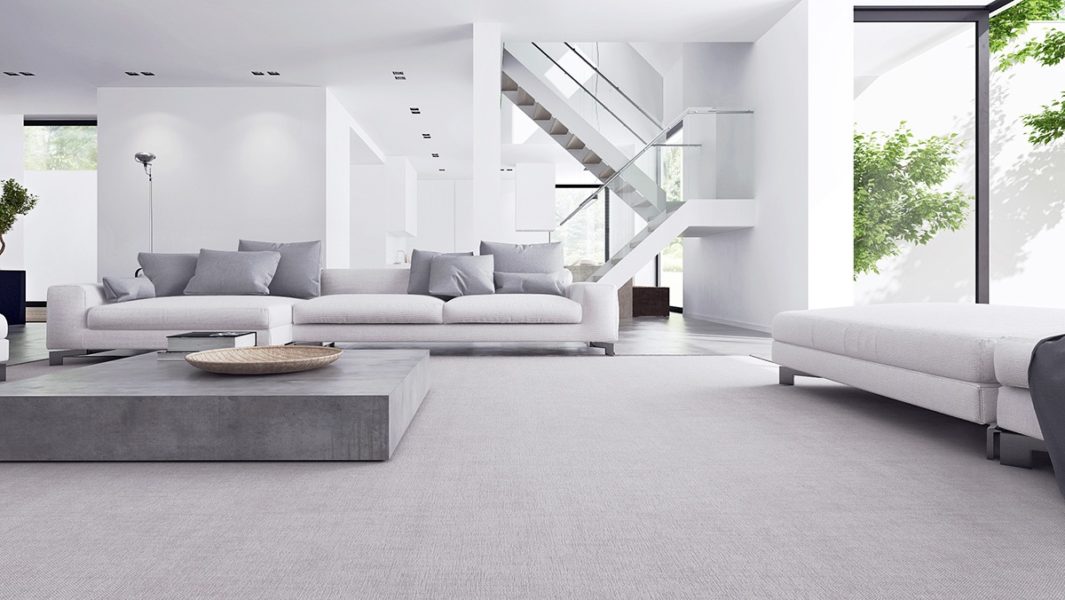
This interior allows only a selected few basic things in its space. It tends to do away with all extra items. And that means, there is literally no scope of adding that favourite vase of yours, if it has no use in your interior! Thus, in a minimal bedroom, you can easily spot a bed and a humble wardrobe. And the dressing table,side table etc may either camouflage in the background or may show limited presence. Though it sounds easy going, it actually requires some clever planning on the designer’s part.
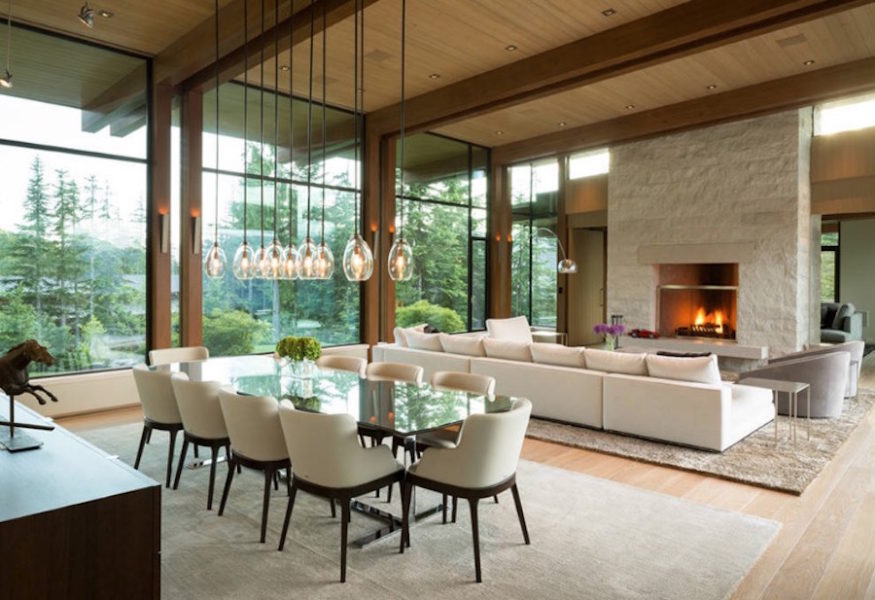
This is a safe bet if you want your interior to be simple like modern style,but with your personal choice of colours. An intresting point to note here is that the style changes with time. So this space may show the simple lines and flowing designs. Still, the grays, black and whites may move out to give way to earthy tones. Aand another feature that stands out is the presence of warm lights. Also, when it comes to materials,don’t have to stick with steel and glass. You are free to add other materials of your choice. And again, you can mix it with a regional influence ( aka traditional) or any period style.
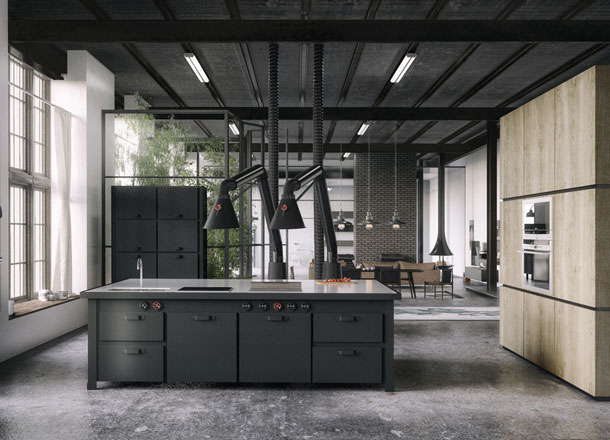
Think about a warehouse. You may picture a big room mostly in brickwork, with supply pipes running across or along the cornices. You may notice a certain ruggedness about the place. And this feel is what this style is about. It adds that bold touch to a space. A lot of storage spaces are open shelves. Simple furniture and muted colors, mostly burnt siennas, are its trademarks. It may sound a bit off to you, but have a look at some of them. You will know why they are big.
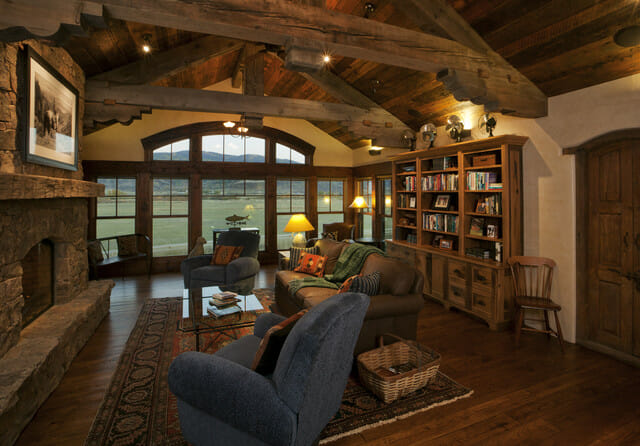
This style has a certain charm.. a rugged look, but that ends up making it all the more cozy. We are talking about natural stones, wooden beams and posts, large and boxy wooden furniture, thick soft elements. Add a dash of neutral colors, white walls and matt metal accessories. At times, you may spot a faux animal hide. A fireplace is another piece of charm in it. It eludes a warm,homely feel.
For more rustic interior design inspiration
You can also find extension of each style in the associated landscape of these houses. You can find a lot many other styles out there. In fact, you can also mix and match them with one of these, if that’s what your heart desires! After all, it is all about selecting the best from all types of interior design styles, for your dream home.
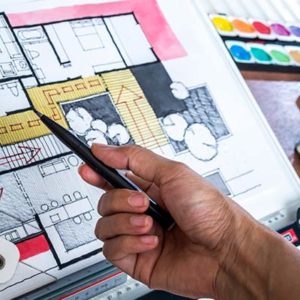
Like any other place in the world, Interior designers create the best space across Indian cities. Hence, the demand for interior designers has increased rapidly in many places. One such region is the tropical south of India. One such state is Kerala. When you design any interior, you should consider the local weather and resources. So, let us find out more about Interior design in Kerala.
The practice of Interior design dates back to Victorian era, when some of the very first designing took place. The reason was simple- a change. Even back then, the need was of decorating according to one’s own choice. If you are wondering whether there is actually any need of a designer in Kerala, think again! Globalization has made big changes in its society, culture and landscape. And you cannot ignore the fact that Kerala has one of the highest literacy rates. Thus as a result, every home owner is well aware of useful designing and its benefits in the long run.

The tropical climate is humid and at times, hot. But, on the plus side, there is a lot of lush greens. This provides the land with a lot of resources- water, land and otherwise. Like with any other place, the traditional construction and interiors have made good use of these. For example, you can see wide use of laterite stones in construction, over modular bricks. No wonder, since it is available abundantly in the state. Moreover, it suits the local climate patterns quite well. One can also find a lot of ceramics (such as roof tiles) and timber products in Kerala homes.
The average Kerala citizen is keen on protecting his/her ecological resources. Hence, home owners want you to preserve and improve the local ecology when you design their houses. They are quite aware of new developments in the field. Thus, people have an easy approach to new materials. There are many who expect you to know all things new in construction market. And so, as a designer it is always exciting to learn and apply new things.
The society is a mix of people from different religions and cultures. And many apply their religious and cultural beliefs to their homes. This adds variety to your design portfolio. A person may prefer traditional Kerala interior. Another family might ask for a Moroccan interior. A bachelor may look for simplicity in his studio apartment. See what I mean here?
Just visit any random supermarket in Kerala. Next to the billing counter, you can see many design magazines on a stand. This gives you a fair idea about the importance of Interiors in the state. And don’t think the designing is limited to public areas. In fact, many people want the latest modular kitchens with trending equipments. Also, there are many who want spa bathrooms! So,the next time, think Kerala when when you think about luxurious settings and decors!
Now, the real question is, how to become a successful interior designer? Apart from the tips in the blog, you should also know your location quite well. Put yourself into regular market surveys. Attend design- related events and competitions. Also,make sure that you are market ready for the profession. And how will you do that?
The answer is quite simple- Join an Interior Design Institute. No, not just any college, but a premium one. Of course, your next question is, how to decide on it? Read ‘best interior design institute in calicut‘. Interior Design in Kerala is huge! Choose the best place to study the art in the state. And you can make it big in the field of Interior Design in Kerala.

One of the most sought-after profession these days is that of Architecture. The common idea is that, architecture is all about making buildings. But is it, really? Isn’t that exactly what a mason does as well? Or for that matter, a structural/civil engineer? Then what makes architecture distinct from these two subjects? Do you have it in you what it takes to be an architect? Well, if you are thinking about pursuing architecture as a career, read on.
The Greek term ‘arkhitekton'(meaning chief builder) evolved into the Latin term ‘architectura’. This gave birth to the medieval term ‘architecture’ in English. Thus, it is obvious that architecture has to do something with planning and constructing buildings. But, a lot of the process has an active and direct connection with Art.
Art is the tool which an architect uses to design a building. This adds that creative streak to it. Obviously,engineers and masons can survive without this part. However, there is no architecture without art. And that is why an architect’s signature is seen in the style in which he shapes his structures.
Currently, if you want to study mainstream architecture in India, B.Arch is the course for you. B.Arch stands for Bachelors in Architecture. The course duration is Five years and you have to pass NATA to be eligible for admission. The Council of Architecture regulates all NATA related procedures Click here to know more about NATA .
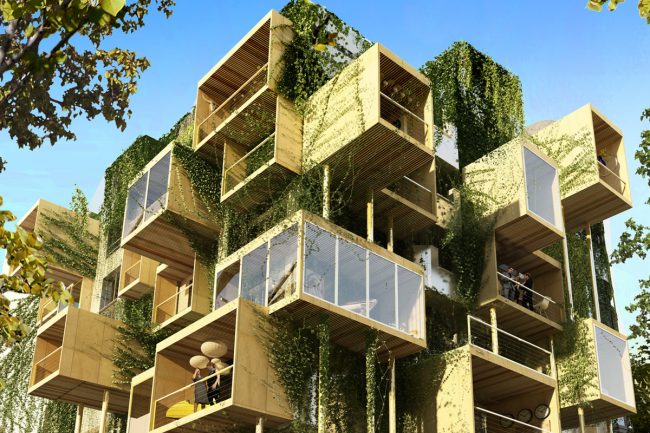
You will study a lot about art and about buildings. This includes the exterior parts such as landscapes or public structures. You will be influential in directing construction practices of the society. Take for instance, the first architect known historically-Imhotep. He designed the pyramid of Djomer in 2630-2611 BC. Mastabas were used to bury the pharaohs before he came up with the pyramidal construction. So before you set on your architectural journey,know what you will learn. A few of the subjects are
These are just a few of the different subjects you will learn.
How you work as an architect depends on primarily where you live. An efficient architect makes good use of local climate and resources. But more than that, a successful architect makes the best use of everything to make the client’s dream project come true. Therefore,the impact of your workmanship stays with your client for his lifetime.
To become such an architect, you need to be creative. You should be able to put your imagination on paper. That means a lot of practice. Also, you need to absorb client’s preferences. Then, you need to design according to architectural guidelines. And make sure you do it in a way that everybody gains from it- be it you, your client or nature.
Develop the researcher in you. Also, make a habit of exploring, surveying and discovering. Since architecture demands innovation, make it a regular feature.
Also, make sure you are friends with technical requirements. Be familiar with the various design software and user-friendly support elements. And try to apply the latest techniques in your practice.
Sky is the limit to your earnings! Start with working for an established architect for a a few years. Also, explore freelancing in architecture. This you can do by taking up small scale works which you can handle side by side. Finally, once you feel you are ready, take the plunge and begin your own independent firm.
Seek the type of work that you want to do-based on different styles,scale and type of work. Don’t worry, you will get a grip over these things with time!
Architecture is a great profession which can impact a society. And with the right attitude and determination, you can leave a mark of your own in this world, with architecture.

Landscape design: When you think of your dream home, the landscape has an important place in it. For example, think about a house that grabbed your attention when you passed by it. Most probably, it must have featured an exquisite landscape design. If you have plans to design your garden this year, read on. In 2018, landscape design is all about sustainability. Add glamour to your garden but not at the cost of our planet! This may sound tricky to you. But, fear not- this blog will help you out with seven tips to rock your garden.
Mother nature knows what’s the best vegetation for your soils. Follow her trends, to begin with! The naturally available plants and landscape elements are suitable to your local climate area. So it makes your work easier both on the aesthetics part as well as your budgeting. Local vegetation means low and easy maintenance with high yield. Therefore, it makes perfect sense that it is trending this year in landscape design arena.
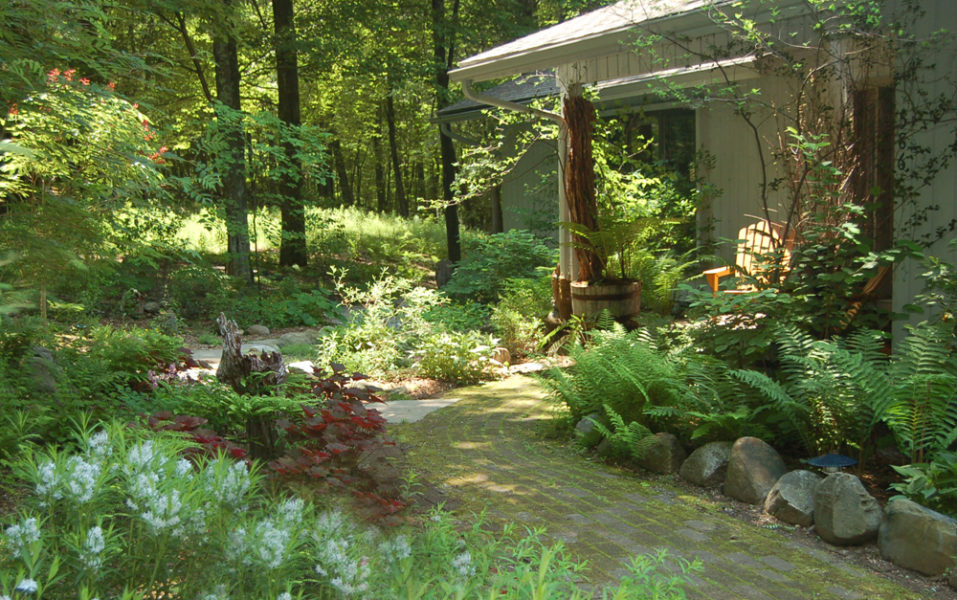
It is a known fact that water crisis is an impending disaster. Thus, landscape designers are going for maximum permeability in their gardens. Every drop counts- and they are leaving no chance to ensure that their gardens are saving rain water. So, you can opt for permeable materials such as brick, gravel, grass pavers and stone. It makes your lanscape ‘breathe’ into a supporting ecological system. All thanks to the design sensibility!
This year, designers have taken indoor zones outside the house, into the gardens. When you start with your landscape design, try to make it an interactive area. Popular garden trends include informal seating area, play zones, dining area, walking pavements and so on. Know the scope of your garden and what your family needs. And include it in your garden area.
Your urban dwelling may not have a huge clearance available. So, landscape design this year has experimented on making a multipurpose garden. Add features that can be made use of in different ways. You can have such furniture or structural feature, either ready made or custom-made. Talk to your designer about it.
Vegetable gardens have been around for quite sometime now. However, this year has seen a huge demand for such garden patches. And landscape designers understand the importance of healthy nutrition. They are going with the flow. This feature was a regular at residential gardens- but now, even hotels are seriously considering this concept. The kitchen garden is a treasure since it provides fresh supplies without any adulteration worries.
You can extend that homely feel to your garden by adding similar design touches. Get inspired from the plan layout. And use the influence for deciding the location of certain garden elements. That means, your home may contain points that offer visual connection to your garden. So use them in a way that your garden views makes you happy even from within your home! You can also opt for similar colour schemes or textures while deciding on vegetation. Also, you may consider furniture styling as well. Moreover, you can definitely add elegance by opting for landscape lighting. The present market has many economic options on offer. Depending on your choice and budget, go with it.
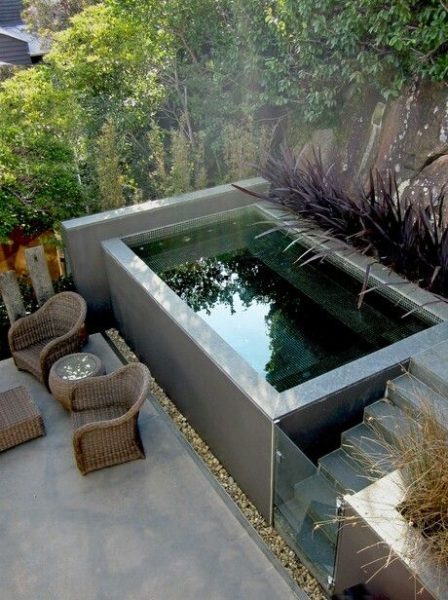
A small water body is a great feature to connect with nature. It can be as simple as a small water fountain or a sober swimming pool. Or, you can opt for a small man-made pond( By small, I mean as much as your garden allows!). Water is a great medium that adds vibrance and calmness all around it. And with its own set of flora and fauna, it adds a surreal charm to your home.
Gardens are a great way to connect with nature. A good landscape design reflects the owner’s taste and modern environmental sensibilities. Do your bit by indulging in sustainable gardens that make your home and this world a better place to live in.
——- Tags

Once you decide to be a successful designer, there is nothing stopping you! But a large part of it also depends on the Interior design institute you choose to learn the art from. Therefore make sure that you choose nothing but the best from the rest! Here are twelve reasons why you should join Vismayam (Calicut).
An experience of 18 plus years in the design industry makes Vismayam the best Interior design Institute. Here, the programs on offer will provide you with course contents according to current design industry. Therefore, with time you gain industry oriented skills and knowledge after course completion.
Creative minds develop further at Vismayam. Many worthy students at present work as senior designers at reputed architecture firms. Many others work as freelance interior designers, who have established own interior design firms. Yes, office management comes easy to you at Vismayam.
The placement support at Vismayam begins right from your admission day. Here, a dedicated placement cell keeps track of your performances. And this leads to student placements according to each student’s potential. Thus,once you complete your course you will have job openings based on your talent and interests.
The field experience of Vismayam faculty members helps you with using bookish contents practically. Moreover, Added teaching skills makes the learning process as smooth as butter! Vismayam team believes in the motto ‘Learning by doing.’ As they say, good teachers know how to bring the best out of students.
The best interior design institute is one which has airy classrooms and design studios. State-of-the-art labs with latest design software are must! And ultimately, nothing beats the thrill of a creative environment. And if that is what you are searching for, Vismayam College is the answer.
The students are the flag bearers of Vismayam to the outer world. So, it only adds to the importance that students have in Vismayam’s way with things. That means, you have access to a strong support system. Your opinions matter when it comes to your future.
A perfect interior design institute will shape you into a design professional. And the same happens at Vismayam College. Sessions on personality development, grooming, soft skills and interview techniques will make you job-confident! And with time, it only gets better. Well,as they say, Rome was not built in a day!
Every now and then, a practicing designer or architect is assigned to teach a subject or two. So, you get to know their views. And they often provide you with valuable tips.This helps you to stay connected with latest trends and practices. After all, role models are meant to show you the way to success.
A good interior design institute has a lot of study resources. Thus, Vismayam has roomy library that features regular update. It also contains digital resources. Basically at Vismayam, everything is set. Just go grab a book already!
Learning at Vismayam pours outside the four walls of classrooms. So you will have regular site visits, market surveys, and interactive sessions. The hosts are usually topic experts from the field. Add to it, some serious workshops, seminars, presentations and exhibitions. These help you in taking your creativity to next level. You won’t even know when you let your ‘first-time’ fear go and you will gain confidence each time.
The academic programs at Vismayam are accredited by Calicut University, Bharathiar University and Open University of Malaysia. So, it means that you can confidently pursue Interior Design studies at Vismayam.
There are many ways to make our planet a better place to live. Of course, as an interior designer, you are one among those who can make it happen. And so, Vismayam ultimately works to make your success dream come true- with added goodness. It will make you realize your own talents, strengths and weaknesses. And then, it helps you in making the correct use of it all! When it comes to work, you may have to face many types of people with whom you will work. With Vismayam, you learn the definite steps that lead to success.
Are you still searching for more reasons?Then click on https://www.vismayamvfx.com/

When you think of a career, you see yourself in a stable work environment. Apart from providing the monthly salary, it should also make you feel good about yourself and your work. One moment you feel that interior design is the perfect profession for you. The next morning you wake up with the question,’Is Interior Design a good career choice?’There are a lot of job opportunities these days. And more so, for creative and inquisitive minds. This holds true for Interior designing as well.
Interior Design is one of the best professional platform that an artistic and innovative person can select. But, there are certain things that one should know when it comes to a career in this field.This blog will help you in making an informed decision when it comes to interior design as a career choice.
Interior Design field is highly dependent on design value. To have an appreciable value, and the design should be original and highly appealing. And for that to happen, creativity is a must.
Interior Design is connected to colors. You should be able to think ahead before deciding on the final output on paper. Each color has its own effect in an interior. We are not talking about red, blue and yellow. We are hinting towards lilac, turquoise, teal, peach, tangerine and so on. Not the names, but the colors.
A master piece needs continuous efforts. Sometimes it takes a lot of time to work out a design. You should be patient all the while. When working on a project with a deadline, it is crucial that you maintain your composure while designing.
Designing an interior is not a one-man show. It requires efficient teamwork. As a designer, you will meet many types of people as clients, managers or co-workers. Therefore, you should develop a knack of making things happen working as a team member.
Yes, window shopping is a very important part of Interior design! If you want to stay ahead in the business, it helps a great deal. A typical interior consists of furniture, lights, curtains, cushions, wall finishes and many other materials. If you find happiness in browsing these markets, then Interior Design is for you.
Interior design as a profession requires a lot of site visits, meetings, working on the design software, creating blueprints and so much more. Due to these, you end up enjoying the scopes of work this field brings to you. Each day presents you with a new design challenge. So, if you are up to it, then Interior Design is the right career choice for you.
Do you find yourself observing interiors and coming up with alternative suggestions or trying to improvise the design value of your surroundings? If your friends seek your advice for their home interiors, consider taking up this profession.
Once you are sure that Interior design is a good career choice for you, take the next step towards becoming one. Select a good interior design college that equips you with a strong knowledge base. The right training will give wings to your dream of becoming a successful interior designer.

One of our previous blogs gave pointers on the different subjects to be studied under interior design . So you get all excited and get admission into the best interior design college in calicut. Classes begin and now you have industry experts and design professionals bombarding you with new terms and alien concepts. You struggle to absorb all of it and frankly that’s natural. This leads you to a learning crisis in interior design. You start asking yourself, is this what I signed for?
Troubled much? Don’t worry! In this section you will find some useful tips on learning and making use of all the knowledge provided to develop into a successful interior designer.
Observe each step, each line carefully as your instructor draws anything on the white board in front of you. The final illustration matters, yes. But you end up learning a thing or two about presentation sketching apart from the illustration itself.
You bought that instrument kit when academic sessions began, in the heat of the moment. Overtime with routine use, you developed a bit of drawing skills and then one fine morning you decide to skip the set, right? Wrong. You have just started. The nuisance of wasted moments over handling the instruments in the beginning of your classes will gradually become a reflexive method every time you want to start drafting/drawing.
Remember the addition, multiplication, subtraction and division sums that you solved in your primary classes? Yep, that’s pretty much what is required by you to master. Proportion and scaling is frequently practiced. It helps a great deal when you can mentally calculate on the spot whenever required. Moreover, a fair idea of feet, meter and centimeter is always a huge advantage.
The habit of surfing through design and architecture magazines is definitely one to keep. Don’t restrict yourself to magazines only; don’t spare any source that enlightens you in this field. It is very important to be aware of the latest trends and developments. You will be surprised with your own academic development once you become proactive.
Seek a new learning daily. Go through what was taught in the class daily, don’t mug up. Just note whether there is anything that you didn’t understand. Make an effort to clarify your doubts the very next day. Once you set a routine, things will look better.
Never settle for the current piece of information. Interior design is a highly dynamic field. Keep researching in the existing avenues. Keep searching for new elements. Market surveys matter a lot in interior design and so does Rate analysis. Not only do they make you aware of current market rates and scenario, they also help you with your initial stages of career, be it as an employee or as a freelancer.
Try your best to not miss any class. It is all the more crucial in practical sessions, site visits and presentations. These are not being conducted just to kill your time. The skills gained from these classes reflect in your works and the knowledge gained first-hand is irreplaceable. Learning by doing is a big, big part of Interior design.
Searching for a premium interior design college? Click on college website to know more.

The career opportunities in Interior Design have grown rapidly due to the high prospects for competent professionals in design industry. An interior designer gains experience once he/she starts working in the field, either as an employee or as a freelancer and this boosts his/her quality of work. It is therefore very important that one selects a suitable course in interior designing that enables the student to acquire knowledge for better scopes in placements.
While selecting an interior design course, there are many points to consider. Do you want to get just the basics and start designing as early as possible? Or are you looking for a course that provides you all essential elements, but in detail? Are you searching for a short term course that covers all areas of designing? Or are you interested in pursuing designing as your graduation course and then eventually get your career started? To cater to all the above, at present the Interior Design courses are provided at three levels: short term vocational/certificate courses, Diploma courses and graduation/ post-graduation courses.
These courses are often endorsed by independent institutes, often with special focus on any one type of designing, such as furniture designing, product designing, furnishings, lighting, color psychology and application etc.
The diploma courses are ideal for those who are already working professionals but want to explore or expand their career in Interior Designing. These are generally certified by a university or an educational board.
The graduation level courses are three-year programs, with an optional added internship term which can be for a few months to a year.
Each course has its own set of advantages. Depending on what you want to do after learning Interior Design, you can choose a corresponding Interior Design program. With the help of the right faculty team and proper guidance, you can make your dream of becoming a successful Interior Designer come true. Choose wisely!
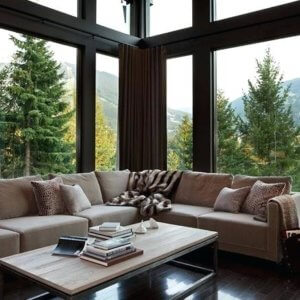
When Pantone announced Ultraviolet as its color for this year, the industry had a fair idea what to expect in the interior design trends in 2018. The style statements in design are extended to all related fields such as fashion design and product design. The year 2018 has witnessed interesting symphonies of unsuspecting elements to add the spark in interiors and the results have been pretty impressive. Here is what you will come across in social media this year!
Hectic schedules have deprived people of soothing moments in their daily lives. This has led to a desire of subtle decoration of master bedrooms. Minimalism rules when it comes to decorating bedrooms this year. Neutral shades and calmer tones help in soothing down the occupant and minimalism ensures a cluster free environment for a peaceful sleep.
The stainless steel and wooden tone cabinets have started giving way to their slightly colorful counterparts. Of course, a white kitchen is classic but people now want their kitchens to be livelier and more in sync with their individual choices.
The use of wood in flooring and furniture can never be replaced. What this year brings to it is change of preferences. Instead of plain strip locks, herringbone patterns have emerged to be a common wooden feature. The warmth and elegance of wooden shades have been extensively used in imparting a rich interior look.
A bathroom these days is a get-away sanctuary- spa-like features add element of luxury and comfort where in a person can relax and seek serene surroundings. Organic touch ups in the form of wooden elements and natural stones along with a sprinkle of greenery here and there, takes bathrooms a few notches up.
Limited textures are trending. What could be more appealing than a touch of nature? Popular fashion and fabric patterns denote a constant presence of floral imprints, mimicking the 70’s. The difference here is the limited use in the interiors, such as in wallpapers and bed linens. The use is restrained and yet experimental.
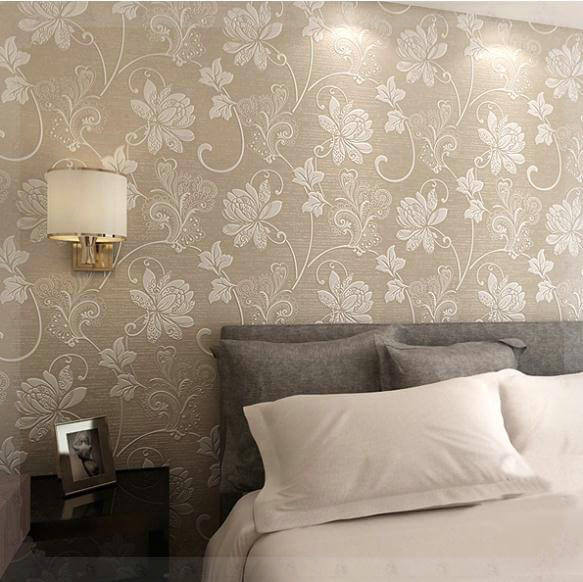
While 2017 did see some statement colors making rounds in premium interiors, 2018 is more about popping colors and it gets only bolder- it happily accommodates gold and metallic hues. This does increase the work of an interior designer since it calls for clever combinations that stay easy on the eyes and continue to delight the occupant.
This year the focus is on vintage pieces- of lighting, furniture, curios, accessories and even flower pots. Yes, you heard that right. This is THE year when you should not hesitate to splurge a handsome amount on that antique furniture you have been longing for since eternity! These elements add a defining value to an interior and end up outlining the style quotient of the spaces they occupy.
Each year ushers in a new dawn of fashion and design specifications. It is important to understand that these ‘rules’ are a simple description of what’s hot and happening in interior design arena, specially defined for trend-seekers. However, the ultimate value of an interior is in the way it reflects the aesthetic tastes of the owner, some of whom eventually become trend-setters.

If interior design has always fascinated you, then you should definitely explore career scope in interior design. The aim is
to become a successful interior designer who is skilled in all aspects of designing, be it space planning, furniture
designing, lighting, landscaping, applying fabric finishes or any other design branch. So the big question is-what are the
areas that have to be extensively understood to start working as an interior designer? Read on.
It remains an effective tool to convey ideas. Freehand sketches, proportional drawings, measured
drawings, projections; rendered illustrations- the category is specifically aimed at making you perfect in
conveying your designs to both laymen as well as professionals. Be it furniture, furnishings or views, graphics
help you in effective visual communication.
Design and architecture are constantly evolving. Naturally, one should be well informed about
existing and useful materials when it comes to construction and design of buildings, furniture and other
elements. A thorough knowledge of materials includes information regarding suitable as well as avoidable
materials according to the local climate of an area. Apart from improving efficient designing, the knowledge of
materials is very important in economizing the total designing process and making the project cost efficient.
Design is everywhere, literally. With increasing emphasis on environment, a designer these days
is expected to apply his/her skills not only to the house, but to its surroundings as well. Shrinking spaces have
led to the popularity of interior landscapes as well, such as courtyards and water bodies.
Interior fabrics such as carpets, curtains, upholsteries, bed spreads, table linen, kitchen linen to name
a few, add that hint of comfort and supple finish to a well defined interior. One should be aware of the vast
collection of soft furnishings available in the market these days, their uses, advantages and disadvantages-
before they are applied to an interior.
What makes an interior attractive? The answer to this question forms the content to be learned in
aesthetics. Apart from effective arrangement of individual interior pieces, it is equally important to understand
the design secrets that add the Midas touch. A successful interior is the result of strategic application of design
principles and elements.
Each member of a family has his/her own choice when it comes to design and color. A clever designer is
successful in making the best of all selections and creating interiors that please the whole family. What comes
handy in that situation? A thorough understanding of colors. The right type of color in the right amount results
in the right outcome.
Some designers have keen interest in taking residential projects, others focus on
commercial sectors. When an interior design student is ready to begin his/her practice, they tend to have a fair
idea about their preferred areas. A multitude of specialties exist, such as kitchen design, product design,
furniture design, color consultancy, lighting and so on.
A building needs some essential services such as plumbing, fire and safety, adequate
heating and ventilation and electricity and interior designers make sure that all required services are
incorporated in a structure at the planning stage itself.
It is not just about Vastu or Feng Shui. Space planning requires in-depth knowledge regarding
building laws, bye- laws and related legal insights. It not only saves time in the planning stage itself, but it also
eases out many steps during construction period for both the client and the designer.
Depending on what course you select, you might learn some more or may superficially cover a particular topic during
course duration. The happy news is, learning does not have an expiry date! Armed with a strong theoretical and practical
base, you can make it big with time, perseverance and experience in the field of interior designing.

It is that month of the year- admissions are open across various colleges that have a variety of courses to offer. Once you have decided to study interior design, it is very important to secure a seat in a premium college that offers world class education. This applies to Interior Design as well. Read on the following tips to understand how you can select the best college to study interior design.
CV AND INTERIOR DESIGN PORTFOLIO: When a student nears course completion, such colleges make sure that students have received all the skills and crafts needed to frame their portfolio. A portfolio generally contains pictorial representations and works done by the student and it is an essential tool to attend an interview. Apart from this, such institutions also help the students in developing an apt CV to land the job they aspire for.
Simply by following these tips, you can be assured of selecting nothing less than the best among Interior Design colleges. The correct choice will definitely pave your path to becoming a successful interior designer. All the best!
Phone: 0495 272 2242